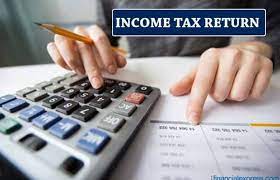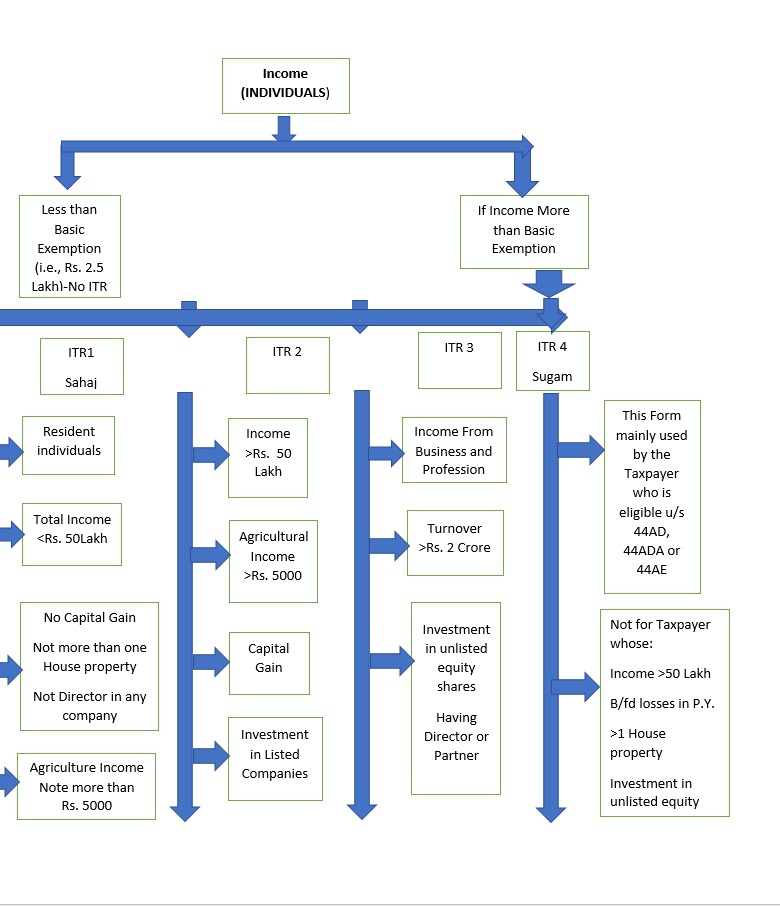 To measure the growth and prosperity of any country, there are several yardsticks, one of which is how many people in that country file their Income Tax Return (ITR). Read below to find out how to file an income tax return.
To measure the growth and prosperity of any country, there are several yardsticks, one of which is how many people in that country file their Income Tax Return (ITR). Read below to find out how to file an income tax return.
Filing the ITR is a path of growth for the nation, from infrastructure to energy, social welfare to subsidies, and it can make a huge difference. This is a matter of pride for an individual if he or she is an Income Taxpayer and files the Income Tax Return in time.
In an advertisement by the Income Tax Department, there is a slogan that “Tax Compliance in Time Makes your Nation Shine” and this compliance has started with the filing of Income Tax Return. Now the basic question arises; how to file Income Tax Return? This Article takes up various questions for individuals who would like to file their Income Tax Returns, as they do not have the aid of competent staff and the Chartered Accountants that Firms, Corporate and NGOs have. I hope this article helps and upgrades the knowledge of individuals to file their ITRs.
Kalidas in Raghuvansham, said, “It was only for the good of his subjects that he collected taxes from them, just as the Sun draws moisture from the Earth to give it back a thousand-fold”. Article 265 of the Constitution of India provides that “no tax shall be levied or collected except by the authority of law, therefore the Income-Tax Act, 1961 was enacted to provide for levy and collection of tax on income earned by a person.
For the filing of Income Tax Returns, one can register with the Income Tax website i.e., eportal.incometax.gov.in through PAN (Permanent Account Number). The main consideration should be given on Residential Status, Person, Scope of Income, Tax Year i.e., Previous Year between 1st April to 31st March and. As per Income Tax Act, every person, whose total income exceeds the maximum 26AS amount (Annual Statement) not chargeable to tax, shall be chargeable to tax at the rate or rates prescribed in the Finance Act.
The Income Tax Act defines the term “person” u/s 2(31) includes an individual, and Hindu Undivided Family (HUF), a company, a firm (including LLP), an Association of Person (AOP) or a Body of Individual (BOI); a local authority, and every other artificial juridical person. Section 2(24) defines the word “income” as including not only those things which this definition explicitly declares but also all such things as the word signifies according to its natural import. There are four types of Forms for filing the Income Tax Returns for the individuals depicted in the Flow Chart as under:

Primarily, there are five parts in Income Tax Return in which we must provide the given information:
Part A: General Information about the Tax Individual. It contains, PAN, Name, Date of Birth, Aadhar No. Mobile No., Email Address, Address, section under which Return is going to be filed whether on or before the due date [u/s 139(1)]; Belated [u/s 139(4)]; Revised [u/s 139(5)], Nature of Employment etc.
Part B: Gross Total Income, that comes from various sources on the Return Forms like Salary, Income from House Property, Income from Business, or Profession, Capital Gain, Income from other sources
Part C: Deductions and Taxable Total Income, this contains various deductions under Chapter VI A of the Income Tax Act. Like 80C: Deduction in respect of Life Insurance Premium, Annuity, Contributions to Provident Fund (PF), Tuition Fees etc. The deduction limit is Rs 1.5 lakh together with section 80CCC and section 80CCD (1).
80CCD(1B): Deduction up to Rs 50,000 in respect of Contribution to Pension Scheme of Central Government (NPS).
80D: Deduction for Medi-claim premium. Premium paid up to Rs 25,000 is eligible for deduction for individuals, other than Senior Citizens. For Senior Citizens, the limit is Rs 50,000 and the overall limit u/s 80D is Rs 1 lakh.
80DD: Deduction for maintenance including medical treatment of a dependent who is a person with a disability. The maximum deduction limit under this section is Rs 75,000.
80DDB: Deduction in respect of expenditure up to Rs 40,000 on medical treatment of specified disease from a neurologist, an oncologist, a urologist, a hematologist, an immunologist, or such other specialist, as may be prescribed.
80E: Deduction for Interest on Loan taken for higher education without any ceiling.
80EE: Deduction for interest up to Rs 50,000 on Loan taken for residential house property.
80EEA: Deduction for interest up to Rs 1.5 lakh on Loan taken for certain house property (on affordable housing).
80EEB: Deduction for interest up to Rs 1.5 lakh on Loan taken for the purchase of the electric vehicle.
80G: Donations to certain funds, charitable institutions, etc. depending on the nature of the donation, the limit varies from 100 per cent of total donation, 50 per cent of total donation or 50 per cent of donation with a cap of 10 per cent of Gross Income.
80GG: Deductions in respect of the rent paid by non-salaried individuals who don’t get House Rent Allowance benefits. The deduction limit is Rs 5,000 per month or 25 per cent of total income in a year, whichever is less.
80GGA: Full deductions in respect of certain donations for scientific research or rural development.
80GGC: Full deductions in respect of donations to Political Party, provided such donations are non-cash donations.
80TTA: Deductions in respect of Interest on Savings Bank Accounts up to Rs 10,000 in case of assesses other than Resident Senior Citizens.
80TTB: Deductions in respect of Interest on deposits up to Rs 50,000 in case of Resident Senior Citizens.
80U: Deduction in case of a person with a disability. Depending on the type and extent of disability maximum deduction allowed under this section is Rs 1.25 lakh.
Part D: Computation of Tax Payable, the Tax on Income, Health and Education Cess, Rebate u/s 87A and the Interest u/s 234A, 234B and 234C of the Income Tax Act is auto-calculated by the Income TaxSoftware whether filing online or offline or through any other software available in the market.
Part E: Other Information, includes details of Bank Accounts with IFSC code and Account Number and has the person done any of the followings, during the previous year, — (i) hold, as beneficial owner, beneficiary or otherwise, any asset (including financial interest in any entity) located outside India; or (ii) have signing authority in any account located outside India; or (iii) have income from any source outside India [applicable only in case of a resident] [Ensure Schedule FA is filled up if the answer is Yes.
Apart from the above, we have to provide the Tax Payment details; like TDS which is auto-captured, however, we have to check with 26AS statement that provides details of any amount deducted as TDS or TCS from various sources of income of a taxpayer. Details of payments of Advance Tax and Self-Assessment Tax –
And lastly the Verification in the following format:
I, son/ daughter of, ……solemnly declare that to the best of my knowledge and belief, the information given in the return and schedules thereto is correct and complete and is in accordance with the provisions of the Income-tax Act, 1961. I further declare that I am making return in my capacity as ___________ and I am also competent to make this return and verify it. I am holding Permanent Account Number (if allotted) (Please see instruction) I further declare that the critical assumptions specified in the agreement have been satisfied and all the terms and conditions of the agreement have been complied with. (Applicable in a case where return is furnished under Section 92CD).
After completing the ITR form, we proceed for online verification in which the software checks and correlates the information provided by us. If there is any discrepancy, an error will be displayed and we would have to rectify it to proceed to the next level i.e., e-verification. One can verify one’s returns online(e-verification) using:
OTP on mobile number registered with Aadhaar, or
EVC generated through your pre-validated bank account, or
EVC generated through your pre-validated demat account, or
EVC through ATM (offline method), or
Net Banking, or
Digital Signature Certificate (DSC).
After E-verification now, one can download the ITR and Acknowledgement copy for the record. If Return is not E-verified then take a print of ITR Receipt, sign it at specified place and send it to the CPC Bangalore within 120 Days of the filing of the ITR.
Source: https://theprint.in/india/how-to-file-income-tax-return/875413/
© 2018 CA Chandan Agarwal. All rights reserved.